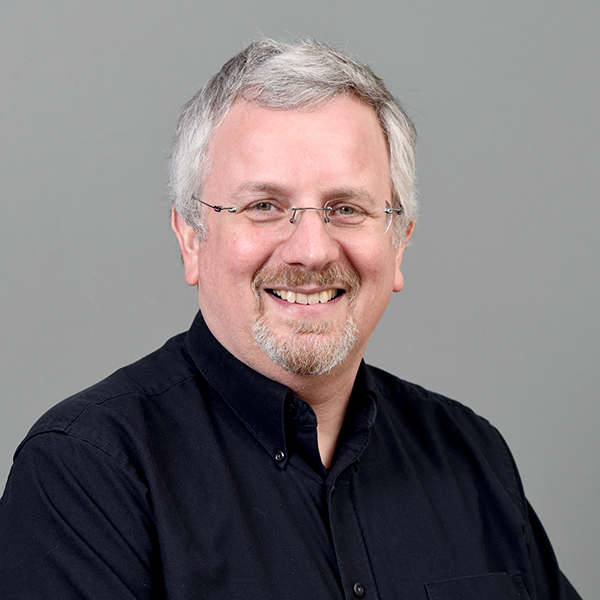
Ariel Anbar
Professor, School of Earth and Space Exploration, College of Liberal Arts and Sciences
School of Earth and Space Exploration
Arizona State University
PO Box 871404
Tempe, AZ 85287-1404
Titles
- Distinguished Global Futures Scientist, Julie Ann Wrigley Global Futures Laboratory
- Professor, School of Earth and Space Exploration, College of Liberal Arts and Sciences
- Professor, School of Molecular Sciences, College of Liberal Arts and Sciences
- Director, Center for Education Through Exploration
- Affiliated Faculty, Center for Biodiversity Outcomes, Global Institute of Sustainability and Innovation
Biography
Ariel Anbar is a scientist and educator interested in Earth’s evolution as an inhabited world, and the prospects for life beyond. His major focus is the deep time history of O2 and bioessential metals in the oceans, as deduced from the application of novel techniques in isotope geochemistry to ancient sedimentary rocks. Trained as a geologist and a chemist, Anbar is a President’s Professor at Arizona State University, where he is on the faculty of the School of Earth & Space Exploration and the School of Molecular Sciences, and a Distinguished Sustainability Scholar in the Global Institute of Sustainability. The author or co-author of over 100 refereed papers, Anbar directed ASU's NASA-funded Astrobiology Program from 2009 - 2015. Recognized as an education innovator , he now directs ASU's Center for Education Through eXploration . He is a graduate of Harvard (A.B. 1989) and Caltech (Ph.D. 1996). Before coming to ASU he was on the faculty of the University of Rochester from 1996 to 2004. Anbar is a Fellow of the Geological Society of America, which awarded him the Donath Medal in 2002. He was recognized as an HHMI Professor in 2014, and elected a Fellow of the Geochemical Society and the European Association of Geochemistry in 2015.
Education
- PhD, Geochemistry, California Institute of Technology, 1996
- MS, Geochemistry, California Institute of Technology, 1991
- AB, Geological Sciences and Chemistry, Harvard College, 1989
Expertise
- atmospheric processes
- oceanography
- paleoenvironments
- biogeochemistry
- trace metals
- isotopes
- climate change and adaptation
- geochemistry
- geological processes
- Quality Education
External Links
Journal Articles
2020
Glaser, D. M., H. E. Hartnett, S. J. Desch, C. T. Unterborn, A. D. Anbar, S. Buessecker, T. Fisher, S. Glaser, S. R. Kane and C. M. Lisse. 2020. Detectability of life using oxygen on pelagic planets and water worlds. The Astrophysical Journal 893(2):163. DOI: 10.3847/1538-4357/ab822d. (link )
2016
Neveu, M., A. T. Poret-Peterson, A. D. Anbar and J. J. Elser. 2016. Ordinary stoichiometry of extraordinary microorganisms. Geobiology 14(1):33-53. DOI: 10.1111/gbi.12153 . (link )
2014
Neveu, M., A. T. Poret-Peterson, Z. M. Lee, A. D. Anbar and J. J. Elser. 2014. Prokaryotic cells separated from sediments are suitable for elemental composition analysis. Limnology and Oceanography: Methods 12:519-529. DOI: 10.4319/lom.2014.12.519. (link )
2013
Glass, J. B., A. Chappaz, B. Eustis, A. C. Heyvaert, D. P. Waetjen, H. E. Hartnett and A. D. Anbar. 2013. Molybdenum geochemistry in a seasonally dysoxic Mo-limited lacustrine ecosystem. Geochimica et Cosmochimica Acta 114(Aug):204-219. DOI: 10.1016/j.gca.2013.03.023. (link )
Marusenko, Y., J. Shipp, G. A. Hamilton, J. L. Morgan, M. Keebaugh, H. Hill, A. Dutta, X. Zhuo, N. Upadhyay, J. Hutchings, P. Herckes, A. D. Anbar, E. Shock and H. E. Hartnett. 2013. Bioavailability of nanoparticulate hematite to Arabidopsis thaliana. Environmental Pollution 174(Mar):150-156. DOI: 10.1016/j.envpol.2012.11.020. (link )
2011
Brennecka, G. A., A. D. Hermann, T. J. Algeo and A. D. Anbar. 2011. Rapid expansion of oceanic anoxia immediately before the end-Permian extinction. Proceedings of the National Academy of Sciences (USA) 1-4. DOI: doi/10.1073/pnas.1106039108. (link )
Brennecka, G., L. E. Wasylenki, S. Weyer and A. D. Anbar. 2011. Uranium isotope fractionation during adsorption to Mn-oxyhydroxides. Env. Sci. Tech. 45:1370-1375. DOI: 10.1021/es03061v. (link )
Wasylenki, L. E., C. L. Weeks, J. R. Bargar, T. G. Spiro, J. R. Hein and A. D. Anbar. 2011. The molecular mechanism of Mo isotope fractionation during adsorption to birnessite. Geochim. Cosmochim. Acta 75:5019-5031.
2010
Glass, J. B., F. Wolfe-Simon, J. J. Elser and A. D. Anbar. 2010. Molybdenum–nitrogen co-limitation in freshwater and coastal heterocystous cyanobacteria. Limnology and Oceanography 55(2):667-676. DOI: 10.4319/lo.2010.55.2.0667. (link )
2009
Beraldi-Campesi, H., H. E. Hartnett, A. D. Anbar, G. W. Gordon and F. Garcia-Pichel. 2009. Effect of biological soil crusts on soil elemental concentrations: Implications for biogeochemistry and as traceable biosignatures of ancient life on land. Geobiology 7(3):348-359. DOI: 10.1111/j.1472-4669.2009.00204.x. (link )
Glass, J. B., F. Wolfe-Simon and A. D. Anbar. 2009. Coevolution of marine metal availability and photoautotrophic nitrogen assimilation. Sci. Total Env. 407:5104-4109.
Majestic, B. J., A. D. Anbar and P. Herckes. 2009. Measuring natural variatons of iron isotopic composition in atmospheric aerosols for use in source-apportionment studies. Env. Sci. Tech. 43:4327-4333.
2008
Anbar, A. D. 2008. Elements and evolution. Science 322:1481-1483.
Posters
2010
Mead, C., A. D. Anbar, J. R. Lyons and T. M. Johnson. 2010. Mass-independent fractionation of mercury isotopes in compact fluorescent light bulbs. Poster presented December 13-17 at the annual meeting of the American Geophysical Union, San Francisco, CA.
Presentations
2011
Mead, C., S. Semken and A. D. Anbar. 2011. Identifying misconceptions about biogeochemistry among undergraduates. Presentation October 9-12 at the annual meeting of the Geological Society of America, Minneapolis, MN.
2010
Mead, C., A. D. Anbar and P. Johnson. 2010. Mass-Independent fractionation of Hg isotopes resulting from photochemical self-shielding. Presentation at the June 13-18 Goldschmidt Conference, Knoxville, TX.

